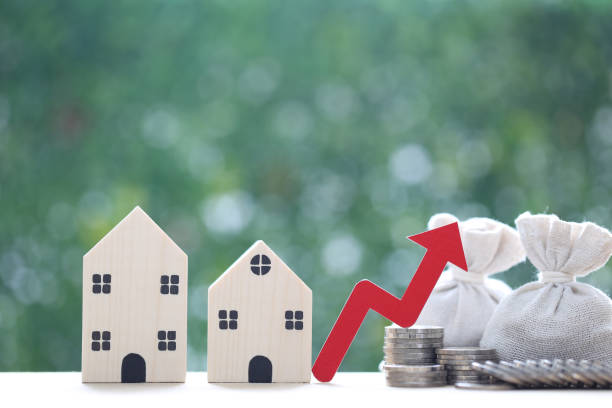What triggers interest rate increases to occur?
To fully comprehend the impact of an interest rate increase, it is first necessary to know why it occurs. Many factors cause rising interest rates, such as:
- Inflation.
- Government borrowing.
- Demand and the supply of money.
Reserve Bank of Australia (RBA) uses monetary policy as well as fiscal policy to regulate economic activity.
A major function of RBA is to play a key role. RBA is to implement monetary to keep the growth of the economy under control, achieve price stability, and regulate economic fluctuations. Monetary policy entails the management of the money supply as well as interest rates through setting the target rate, also known as the cash rate, which is the interest rate for the overnight loan between banks.
The RBA is a meeting that occurs on the first Tuesday of each month to determine the interest rate for Australia. Then, they decide to reduce it, raise it, or keep it the same.
The RBA’s Latest Meeting
The RBA recently raised the interest rate on the 7th of June 2022 meeting in Australia by 0.50 percent, the largest cash rate increase over the past 22 years.
Prior to the meeting of May 2022 at the May 2022 meeting, the RBA raised the cash rate goal by 0.25 percent after 11 years.
The subsequent increases have brought to the table the RBA cash rate, also known as the Australian interest rate, currently at 0.85 percent.
The rate of inflation in Australia has been rising significantly over the past year. Long times of high prices may result in unemployment for businesses trying to reduce their costs. The unemployment rate is at an all-time low in Australia. It was below 4 percent at the beginning of the mid-1970s.
The main objective of the RBA to increase interest rates is to improve the creation of jobs, stability in price growth and economic growth, and, therefore, the well-being of the Australian population.
Here’s a graph that shows the cash rate targets for Australia between 1990 and 2022. The chart provides an overview of the interest rate hike decisions made by the RBA between 1990 and 2022.
How does the rise in interest rates impact you?
The effect of the rate hike could have different effects on the general population. To analyze the impact of the rate rise first, it is important to know your situation.
The increase in interest rates has resulted in the cost of living within Australia costlier. For the majority of Australians, an increase in the rates of interest means the repayments on all types of loans, including credit cards, mortgages, and loans, will be more expensive. The effect of a rise in interest rates on household budgets could have a huge impact since the majority of homeowners still have mortgages with variable rates in Australia.
On the other hand, an increase in interest rates will help lower inflation, improve employment, and benefit savers as well as non-homeowners generally.
As borrowing becomes more expensive, it will result in less demand for products as well as services. People will be looking to save money on things that aren’t essential or seek to hold.
For help in getting an idea of your savings and expenses, make sure to check out the budget planner along with our Savings Calculator. (All data is kept private and is free to use).
What impact does this have on the real estate market?
There has been a dramatic increase in property prices since the start of the epidemic in the year 2020, with a record high of 35 percent in Australia. The price at which properties were rising cannot continue even with no increase in interest rates.
The average cost of property in Melbourne is now close to one million AUD following the dramatic rise in prices for properties over two years. It almost made it impossible for first-time buyers to purchase homes with a minimum deposit of 10 percent, which is close to $100,000 in AUD. The increase in interest rates is intended to stabilize the housing market.
Normally, when the interest rate rises, the market for property is cooled. However, as the home market experienced a significant rise in the past two years, prices are likely to drop substantially.
However, the rising interest rate could be an opportunity for growth in the rental market because the affordability of buying homes will fall. As the cost of buying houses, more people are looking for rental properties, which is advantageous for investors who own investment properties.
How will this affect your finances?
For homeowners, the increase in interest rates means the amount they can borrow has diminished. Due to the lower affordability required to purchase a home, homeowners may need to look elsewhere for a better deal.
In contrast, an increase in interest rates can be beneficial to those who have savings. If you’re a homeowner who does not have a mortgage and has some protection in a bank, the rise in interest rates is a good thing for you.
If you’re considering the possibility of obtaining a mortgage or other kind of loan, it will cost more.
If you’re paying an interest rate that is fixed on your loan, the rate of interest will stay the same. The rate increase won’t impact you until the time your loan term expires.
If you’re a lender, the increase in interest rates can be beneficial to the lender. However, you must take into account increased rates of interest as well as other gains likely to rise before making a loan.
It is believed by experts that the RBA will raise the interest rate soon. If this prediction is true, it will result in additional increases in repayments for households.
But, it’s going be a more severe shock to those taking out fixed-rate mortgages in the time of the pandemic, in the years when interest rates were lower than 2.5 percent.
It is recommended to periodically check how the current interest rates could impact your investments to make sure you’re in line with your investment plan.




